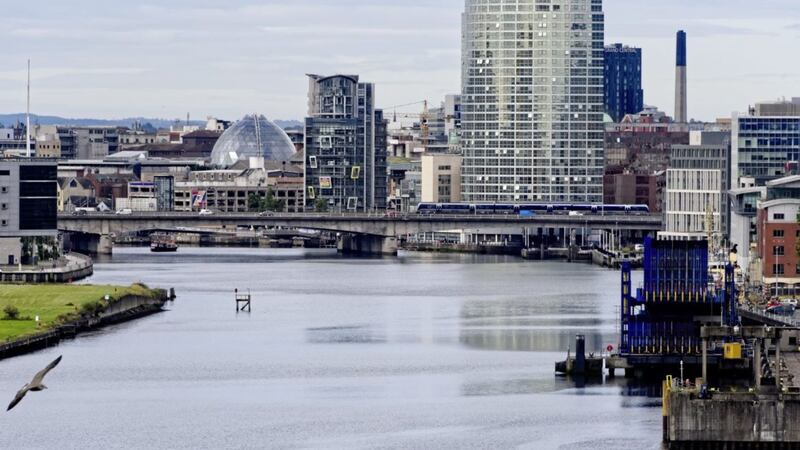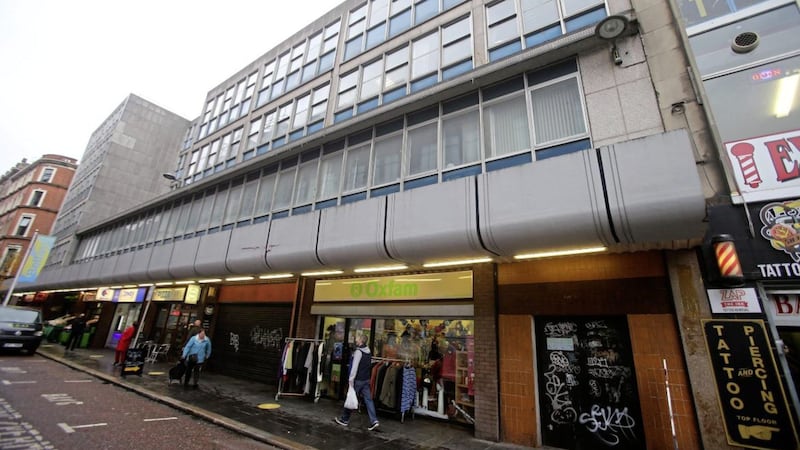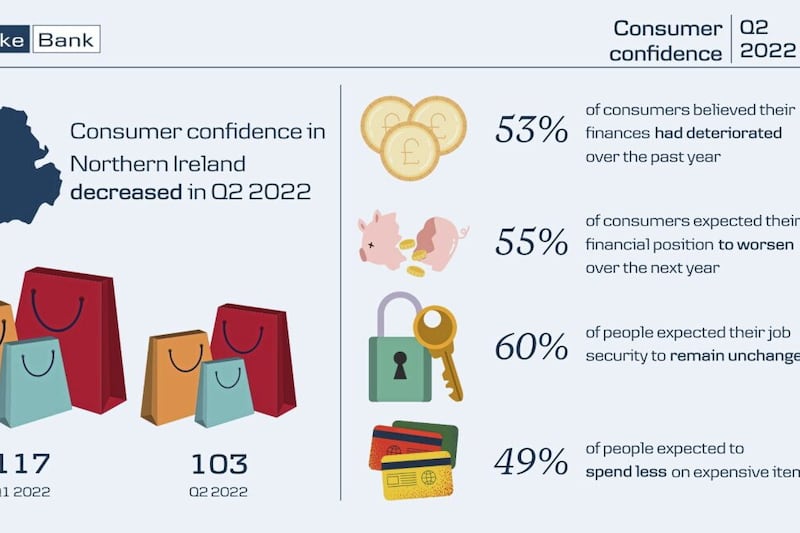THIS week Danske Bank publishes its latest Northern Ireland Quarterly Sectoral Forecasts report, which states that economic output in the region will likely have increased in the second quarter of this year.
But while the local economy still appears to be expanding, growth rates are expected to remain subdued over the rest of this year and into next year.
So Danske Bank has revised its forecast for economic growth downwards for both 2019 and 2020. Assuming a no-deal Brexit is avoided, we now expect the Northern Ireland economy to grow by 0.9 per cent in 2019 and by 1.0 per cent in 2020, below the 1.2 per cent we expect UK GDP to grow by in both years.
From a sector perspective, we expect the information & communication and professional, scientific & technical services sectors to post the fastest rates of output growth over the next two years.
Public administration & defence continues to have the weakest outlook of all the sectors of the local economy. It is the only sector in which we expect output to fall in 2019 and 2020.
But what are the main factors likely to lead to these modest growth rates? What are the prospects for the local labour market? And what risks is the economy facing?
Here are five key things to note from our latest report:
1 Household spending looks set to experience solid growth: Over the last year, the strength of the labour market in both the UK and Northern Ireland has led to a pick-up in the rate of wage growth. At the same time, inflationary pressures have moderated and the combination of these two factors has boosted household purchasing power. Looking forward, we expect the rate of wage growth to stabilise and inflation to settle around its 2 per cent target rate. Our forecasts assumes that growth in spending closely tracks real income growth over the next few years, with consumer spending in Northern Ireland expected be the main driver of overall economic growth.
2 Slower global growth and Brexit to drag on growth rates: Exporting business across the UK have found life much tougher of late as the global economic outlook has deteriorated. We expect growth in world trade to slow this year as the impact of greater trade protectionism feeds through. In 2020, world trade growth should be stronger than in 2019, but is likely to remain relatively subdued. Another drag on growth is likely to be the impact that Brexit-related uncertainty will have on business investment. Even if some resolution to the current Brexit impasse can be found, it is important to remember this is just the first phase of the Brexit process. The second phase will deal with the UK’s future relationship with the EU. We expect business investment to remain constrained until the long-term trading relationship between the UK and European Union becomes clearer.
3 Economic policy to be relatively accommodative: The future path of UK interest rates is likely to be heavily dependent on how the Brexit process plays out over the coming weeks and months. Assuming that a no-deal Brexit is avoided, we expect UK interest rates to remain on hold at 0.75 per cent for the rest of 2019. It is likely that fiscal policy acted as a drag on economic growth in the previous fiscal year. But given higher levels of NHS spending and increases in income tax thresholds, as well as the further loosening of policy set out in the Chancellor’s September spending round, we now expect the fiscal stance to be modestly supportive of growth.
4 Pace of job creation set to slow: The pace of growth in the Northern Ireland labour market looks to be experiencing an anticipated slowdown, with the latest official data showing the number of jobs expanded at a weaker rate in the second quarter of the year than at the start of 2019. We continue to expect the number of jobs to increase by 1.3 per cent this year, but for the pace of job creation to slow to 0.5 per cent next year as a result of the modest rates of economic growth, the little spare capacity left in the labour market and the need for businesses to shift their focus away from further recruitment and more towards productivity improvements.
5 Risks weighted to the downside: There are several risks and uncertainties which may impact upon the Northern Ireland economy over the rest of this year and into next year. The two most significant remain Brexit and the local political impasse. However there are a number of key global uncertainties which could also adversely impact the local economy. These include the potential for a further escalation of the trade war between the US and China, the risk that the performance of the global economy lurches even further downwards and geopolitical tensions in the Middle East.
In summary, our base case assumption is for continued economic growth in Northern Ireland and the UK over 2019 and 2020. However, our expected rates of growth are modest and it feels as if there are more downside risks facing the economy than there are upside opportunities at this moment in time.
:: Conor Lambe is chief economist at Danske Bank in Northern Ireland
:: Next week: Brendan Mulgrew








